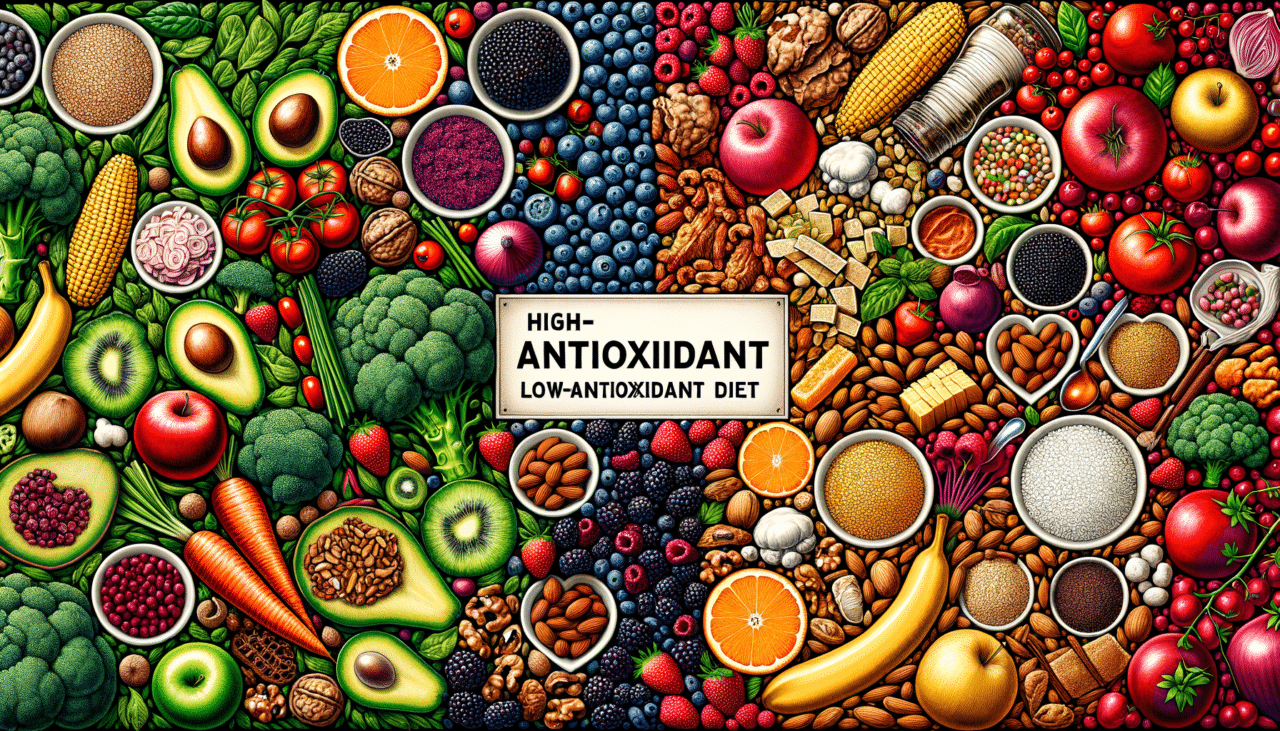In the quest for optimal health and wellness, diet plays a pivotal role. Among the myriad dietary choices available, the high-antioxidant diet and the low-antioxidant diet have garnered significant attention. Each of these dietary approaches has its own set of benefits, characteristics, and potential drawbacks. In this comprehensive article, we will explore the main points of comparison between a high-antioxidant diet and a low-antioxidant diet, helping you determine which is more suitable for your lifestyle and health goals.
Understanding Antioxidants
Before delving into the comparison, it’s crucial to understand what antioxidants are and why they matter. Antioxidants are compounds found in certain foods that help neutralize free radicals in the body. Free radicals are unstable molecules that can damage cells and contribute to aging and diseases such as cancer. By consuming a diet rich in antioxidants, you can potentially reduce oxidative stress and promote better health.
Characteristics of a High-Antioxidant Diet
A high-antioxidant diet is characterized by the abundant consumption of foods rich in antioxidants. These foods include:
-
Fruits and Vegetables: Berries (such as blueberries, strawberries, and raspberries), leafy greens (like spinach and kale), and other colorful fruits and vegetables are packed with antioxidants.
-
Nuts and Seeds: Almonds, walnuts, and sunflower seeds are excellent sources of antioxidants.
-
Whole Grains: Foods like quinoa, brown rice, and oats contain antioxidants along with fiber.
-
Legumes: Beans, lentils, and chickpeas are not only rich in protein but also in antioxidants.
-
Herbs and Spices: Turmeric, cinnamon, and ginger add flavor and antioxidants to meals.
-
Beverages: Green tea, black tea, and red wine (in moderation) are known for their antioxidant properties.
Benefits of a High-Antioxidant Diet
- Reduced Risk of Chronic Diseases: By combating oxidative stress, antioxidants may lower the risk of heart disease, cancer, and neurodegenerative diseases.
- Improved Skin Health: Antioxidants can support skin health, reducing the signs of aging and promoting a healthy complexion.
- Enhanced Immune Function: A diet high in antioxidants may boost the immune system, helping the body fend off infections.
Drawbacks of a High-Antioxidant Diet
- Cost: Organic and fresh produce can be expensive, potentially making a high-antioxidant diet less accessible.
- Time-Consuming: Preparing meals with fresh ingredients often requires more time and effort.
Characteristics of a Low-Antioxidant Diet
A low-antioxidant diet typically involves consuming fewer foods rich in antioxidants, focusing instead on other dietary components. This diet may include:
-
Processed Foods: Foods that are high in sugars, refined grains, and unhealthy fats, such as packaged snacks and fast food.
-
Animal Products: A diet heavy in meats, especially red and processed meats, which tend to be lower in antioxidants.
-
Limited Fruits and Vegetables: A reduced intake of fresh produce, leading to lower antioxidant consumption.
Benefits of a Low-Antioxidant Diet
- Simplicity: This diet may be easier to follow for those who prefer not to focus on specific nutrient intake.
- Lower Cost: Processed foods and non-organic produce are often less expensive.
Drawbacks of a Low-Antioxidant Diet
- Increased Health Risks: A lack of antioxidants can lead to higher oxidative stress, potentially increasing the risk of chronic diseases.
- Nutrient Deficiencies: Limited intake of fruits, vegetables, and whole grains can result in deficiencies in essential vitamins and minerals.
Comparative Table: High-Antioxidant Diet vs. Low-Antioxidant Diet
| Feature | High-Antioxidant Diet | Low-Antioxidant Diet |
|---|---|---|
| Primary Foods | Fruits, vegetables, nuts, seeds, whole grains | Processed foods, animal products |
| Health Benefits | Reduced disease risk, better skin, stronger immune system | Simplicity, lower cost |
| Potential Drawbacks | Higher cost, time-intensive meal prep | Increased health risks, nutrient deficiencies |
| Ideal For | Health-conscious individuals, aging population | Those seeking simplicity, budget-conscious |
Conclusion
In summary, the choice between a high-antioxidant diet and a low-antioxidant diet largely depends on individual health goals, lifestyle, and preferences. A high-antioxidant diet offers extensive health benefits but may come with higher costs and time commitments. On the other

Comments (0)
There are no comments here yet, you can be the first!